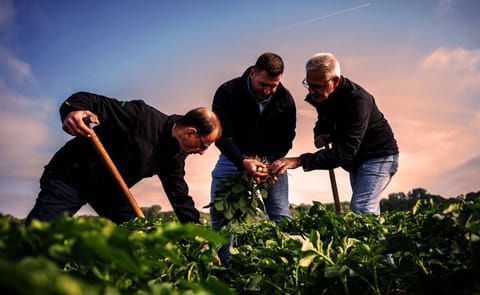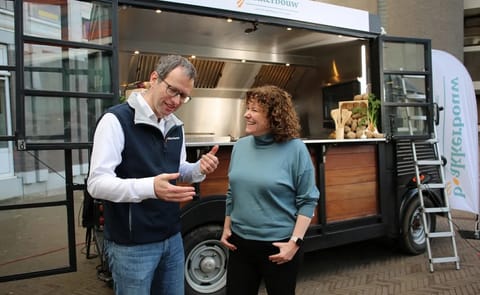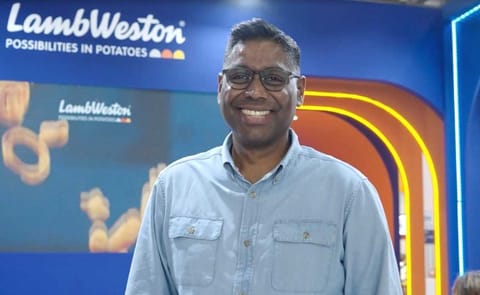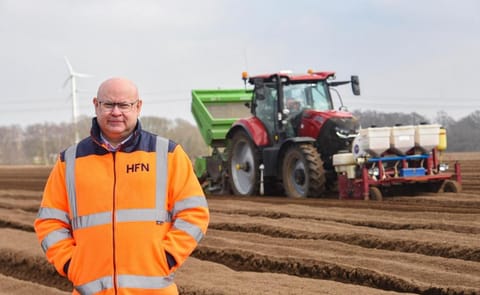USDA and EPA Announce Winners of the Next Gen Fertilizer Innovations Challenge

USDA and EPA Announce Winners of the Next Gen Fertilizer Innovations Challenge.
The United States Department of Agriculture and the U.S. Environmental Protection Agency (EPA) announced the winners of the Next Gen Fertilizer Innovations Challenge, the second of a two-part, joint USDA-EPA Partnership and Competition on Enhanced Efficiency Fertilizers (EEFs) to Advance Agricultural Sustainability in the United States.
The goal of the competition is to improve the efficiency of fertilizers to increase crop yields while reducing the impacts of fertilizers on the environment.
Winners of the challenge submitted concepts for novel technologies that can reduce the environmental effects of nitrogen and phosphorus from modern agriculture while maintaining or increasing crop yields.
The winning solutions use nanoparticles that require less fertilizer and release nutrients on-demand to growing plants, and then biodegrade into harmless substances or even nutrients; support greater plant growth from the same or less fertilizer application; and other approaches.
Hubert Hamer, Acting USDA Chief Scientist:
Winners include:
Tier 1 solutions (USD 17,500 prize):
The competition launched on August 26, 2020. Part two of the first challenge, “EEFs: Environmental and Agronomic Challenge,” is ongoing. More information can be found at: www.epa.gov/innovation/next-gen-fertilizer-challenges.
The goal of the competition is to improve the efficiency of fertilizers to increase crop yields while reducing the impacts of fertilizers on the environment.
Winners of the challenge submitted concepts for novel technologies that can reduce the environmental effects of nitrogen and phosphorus from modern agriculture while maintaining or increasing crop yields.
The winning solutions use nanoparticles that require less fertilizer and release nutrients on-demand to growing plants, and then biodegrade into harmless substances or even nutrients; support greater plant growth from the same or less fertilizer application; and other approaches.
Hubert Hamer, Acting USDA Chief Scientist:
"Farmers, ranchers, and foresters are well-positioned to be leaders in tackling climate change through technological innovation."Wayne Cascio, acting principal deputy assistant administrator for science for EPA’s Office of Research and Development:
"Through programs like the Next Gen Fertilizer Innovations Challenge, USDA is partnering with the private sector to find new climate-smart solutions that are good for farmers and good for the environment."
"The goal of the challenge is to develop and use innovative and affordable technologies to reduce environmental impacts of modern agriculture on our air, land, and water while maintaining agricultural productivity and profitability."The winning concepts include a range of solutions that can improve environmental outcomes, including reduced nitrous oxide emissions—the largest source of greenhouse gas emissions from agriculture— while maintaining or increasing crop yields.
"We are excited about the possibilities and continued new work in this area."
Winners include:
Tier 1 solutions (USD 17,500 prize):
- Dr. Christopher Hendrickson, Aqua-Yield Operations LLC, Draper, Utah, for a nano-smart fertilizer.
- Taylor Pursell, Pursell Agri-Tech, Sylacauga, Ala., for “Urea 2.0,” which replaces the conventional urea core with a customizable mixture of materials to provide fertilizers tailored to local needs.
- Dr. Kuide Qin, Verdesian Life Sciences, Cary, N.C., for using innovative mixture technologies to improve performance of industry-standard nitrapyrin for longer effectiveness, less nitrate leaching, and prevention of farm equipment corrosion.
- Dr. Catherine Roue, Fertinagro Biotech International, Portage, Mich., for “Phosphate Liberation Booster” technology, which uses secretions from phosphate-starved plants to boost plant uptake so less fertilizer may be added and legacy phosphorus can be accessed.
- Chandrika Varadachari, Agtec Innovations Inc., Los Altos, Calif., for “Smart-N,” which is a smart-fertilizer that releases nutrients on-demand by the crop and which creates a chemical “cage” for urea that dissolves into plant nutrients.
Tier 3 solutions (Honorable mention): - Dr. Jaroslav Nisler, the Institute of Experimental Botany, The Czech Academy of Sciences, Czech Republic, for using derivatives of the plant growth hormone MTU, which helps create longer growth periods, protection from stress, larger plants, and potentially less nutrient loss per unit of fertilizer applied.
- Dr. Leanne Gilbertson, Civil and Environmental Engineering Department at the University of Pittsburgh, Penn., for creating a “protected fertilizer package,” which can carry nutrients through soil pores to the area around the plant roots.
- Dr. Robert Neidermyer, Holganix LLC, Aston, Penn., for “Bio 800+,” a microbial inoculant that harnesses the power of over 800 species of soil microbes, kelp, and other soil amending ingredients to promote greater crop production and plant health.
- Paul Mullins, Brandon Products Ltd., Ireland, for “BBS-1,” a biostimulant derived from seaweed extract that is applied as a fertilizer coating to improve nitrogen-uptake in root cells.
The competition launched on August 26, 2020. Part two of the first challenge, “EEFs: Environmental and Agronomic Challenge,” is ongoing. More information can be found at: www.epa.gov/innovation/next-gen-fertilizer-challenges.
Like to receive news like this by email? Join and Subscribe!
Get the latest potato industry news straight to your WhatsApp. Join the PotatoPro WhatsApp Community!
Sponsored Content
Sponsored Content
Sponsored Content
Sponsored Content








